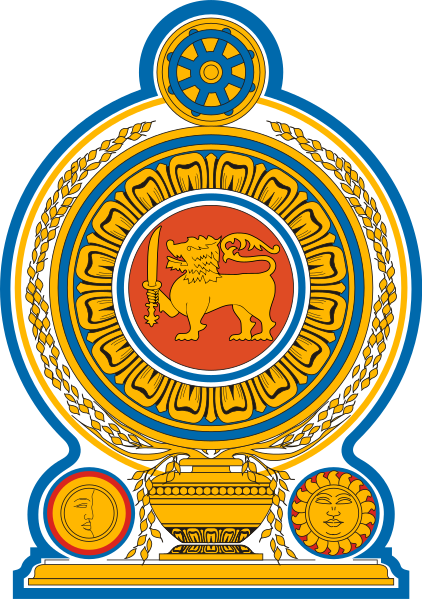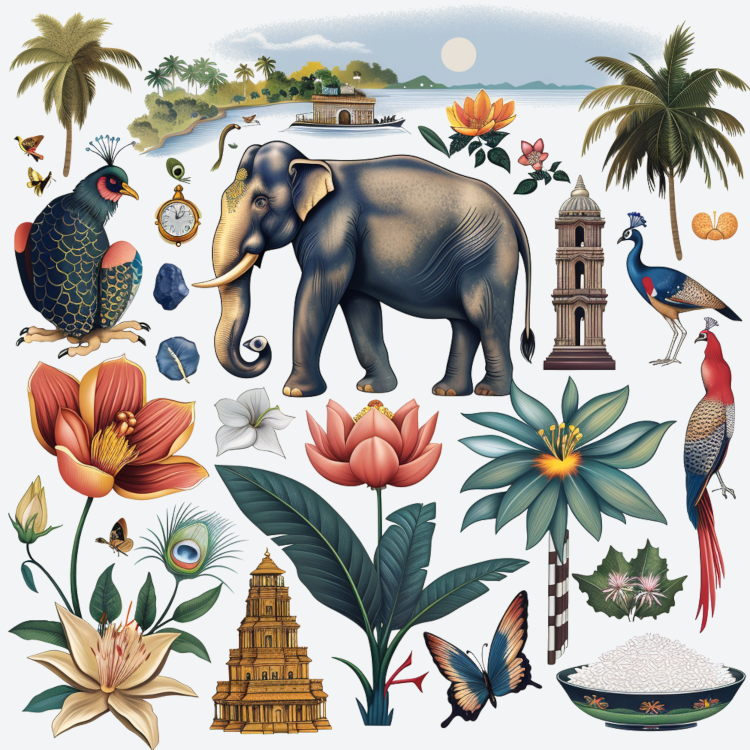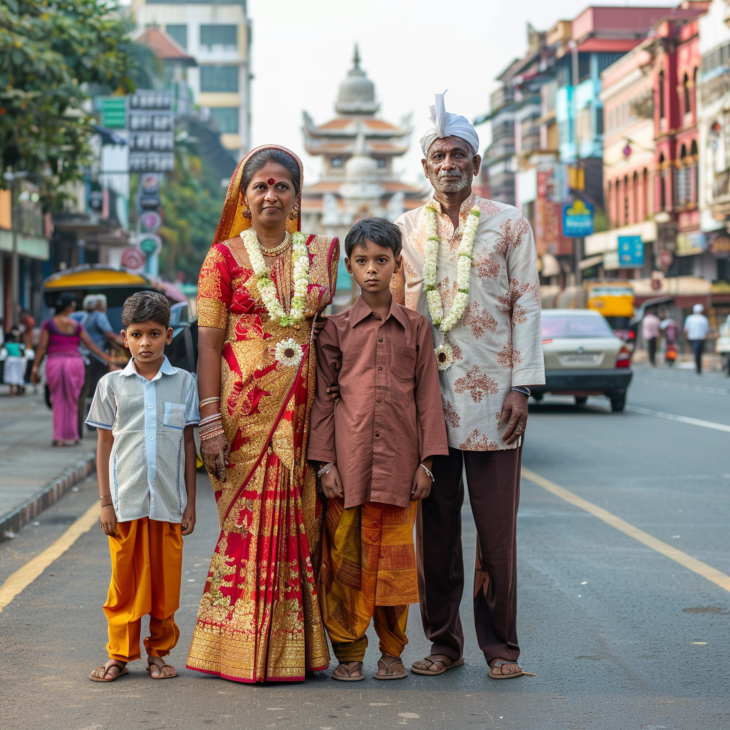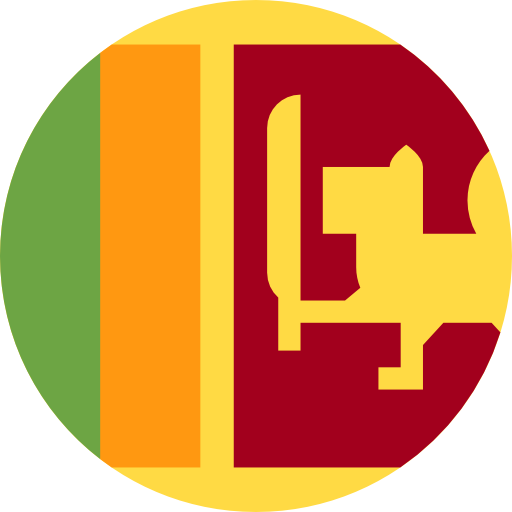About LK

Location
Sri Lanka is an island country located in South Asia, in the Indian Ocean. It is situated in the southeast of India, separated by the Gulf of Mannar and the Palk Strait.
Capital
The capital city of Sri Lanka is Sri Jayawardenepura Kotte, but the largest city and commercial capital is Colombo.
Population
As of the latest estimates, Sri Lanka has a population of approximately 21.4 million people.
Area
Sri Lanka covers a total land area of about 65,610 square kilometers (25,330 square miles).
Official Languages
Sinhala and Tamil are the official languages of Sri Lanka, with Sinhala being the language of the majority Sinhalese ethnic group and Tamil being spoken by the Tamil minority.
Government
Sri Lanka is a democratic republic with a semi-presidential system of government. The President of Sri Lanka is both the head of state and government, while the Prime Minister is the head of the cabinet.
Independence
Sri Lanka gained independence from British colonial rule on February 4, 1948.
Currency
The currency of Sri Lanka is the Sri Lankan Rupee (LKR).
Economy
Sri Lanka has a mixed economy with sectors including agriculture, manufacturing, services, and tourism. The country is known for its tea and rubber exports, as well as tourism, textiles, and apparel.
Culture
Sri Lanka has a rich cultural heritage influenced by Buddhism, Hinduism, and various other traditions. The country is known for its vibrant festivals, such as Vesak (celebrating the birth, enlightenment, and death of Buddha), and its traditional arts, including dance, music, and cuisine.
Religion
Buddhism is the predominant religion in Sri Lanka, practiced by the majority of the population. Hinduism, Islam, and Christianity are also practiced by significant minorities.
Landscapes
Sri Lanka is known for its diverse landscapes, including lush rainforests, rolling hills, tea plantations, and pristine beaches. The island is also home to several national parks and wildlife reserves, renowned for their biodiversity.
History
Sri Lanka has a long history dating back thousands of years, with evidence of early human settlements and ancient civilizations. The island was ruled by various kingdoms and empires, including the Anuradhapura Kingdom, the Polonnaruwa Kingdom, and the Kandyan Kingdom, before becoming a British colony in the 19th century.

National Items of Sri Lanka
Sri Lankan Elephant
The Sri Lankan Elephant (Elephas maximus maximus) is a symbol of strength, wisdom, and cultural heritage in Sri Lanka. These elephants are integral to many religious and cultural festivals, such as the Esala Perahera.
Sri Lankan Junglefowl
The Sri Lankan Junglefowl (Gallus lafayettii) is the national bird of Sri Lanka. Known for its vibrant plumage, it symbolizes the rich biodiversity of the country.
Blue Water Lily (Nil Mahanel)
The Blue Water Lily (Nymphaea nouchali), known locally as Nil Mahanel, is the national flower of Sri Lanka. It symbolizes purity, tranquility, and the natural beauty of the country's aquatic habitats.
Ceylon Tea
Ceylon Tea is one of Sri Lanka's most famous exports. It symbolizes the country's agricultural heritage, economic importance, and cultural significance of tea.
Coconut Tree
The Coconut Tree (Cocos nucifera) is significant in Sri Lankan culture and economy. It symbolizes versatility, sustenance, and the tropical nature of the country.
Rice and Curry
Rice and curry are the staple food of Sri Lanka. It symbolizes the rich culinary traditions and the importance of agriculture in the country's diet.
Lion
The Lion is a national symbol of Sri Lanka, prominently featured on the national flag. It represents bravery, strength, and the historical legacy of the Sinhalese people.
Lotus Flower
The Lotus Flower is a significant symbol in Sri Lankan culture, representing purity, enlightenment, and rebirth, often associated with Buddhist teachings.
Sri Maha Bodhi Tree
The Sri Maha Bodhi Tree in Anuradhapura is a sacred fig tree and a significant religious site. It symbolizes spiritual heritage, enlightenment, and the Buddhist history of Sri Lanka.
Mask of Kolam
The traditional Mask of Kolam is used in Sri Lankan folk dances and drama. It symbolizes cultural heritage, traditional arts, and the rich history of performing arts in Sri Lanka.
Gemstones
Sri Lanka is known for its precious gemstones, especially sapphires. They symbolize the country's natural wealth, beauty, and historical significance in gem trading.
Peacock
The Peacock is often associated with Sri Lankan culture and symbolizes beauty, grace, and the rich wildlife heritage of the country.
Esala Perahera
The Esala Perahera is one of Sri Lanka's grandest festivals, featuring a procession of dancers, drummers, and decorated elephants. It symbolizes cultural heritage, religious significance, and traditional celebrations.
Stilt Fishermen
Stilt fishing is a traditional method of fishing unique to Sri Lanka. It symbolizes the ingenuity, resourcefulness, and cultural heritage of the coastal communities.

This anthem celebrates Sri Lanka as the motherland and expresses reverence and gratitude towards the country's prosperity, heritage, and unity. It reflects a sense of pride and loyalty to the nation.
The national anthem of Sri Lanka is called "Sri Lanka Matha" in Sinhala and "Namo Namo Matha" in Tamil. Here are the lyrics in Sinhala along with an English translation:
ශ්රී ලංකා මාතා අලුත් අවුරුදු වේවා,
අත් අලුත් අසිරියක් නීතියේ දේශපාලනයක් වේවා.
හොඳම ලෝකය සඳහා පමණක් ලක්ෂ ගොඩනයක්,
අනුරාධපුර ලොවට අත් බිහි ගෙන යාමක් වේවා.
ලෝක ප්රකාශයට එරෙහිව අසත්ව සුභ දවසක්,
අත් දැනුම් දිවියක් සුභ දවසක් වේවා.


